Precision bearings refer to bearings that have reached the precision requirements at the micron level or even the nanometer level through precision machining.
With the continuous progress of technology, the processing requirements for precision bearings are becoming increasingly higher. Especially in industries such as aviation, automobiles and medical equipment, the precision of bearings directly determines the performance and safety of the equipment.
Precision bearings are mainly applied in fields such as aerospace, the automotive industry, medical equipment and high-precision machine tools.
NEWBEE Transmission is a company that specializes in providing precision bearings.Our company has rich experience in the bearing industry for over ten years.We can provide precision bearings of various types, such as thin-section bearings, YRT turntable bearings, slewing bearings, crossed roller bearings, mill bearings and solid oil bearings.Our bearings are mainly exported to many countries at home and abroad, such as those in Europe, North America, Southeast Asia, the Middle East and Africa.
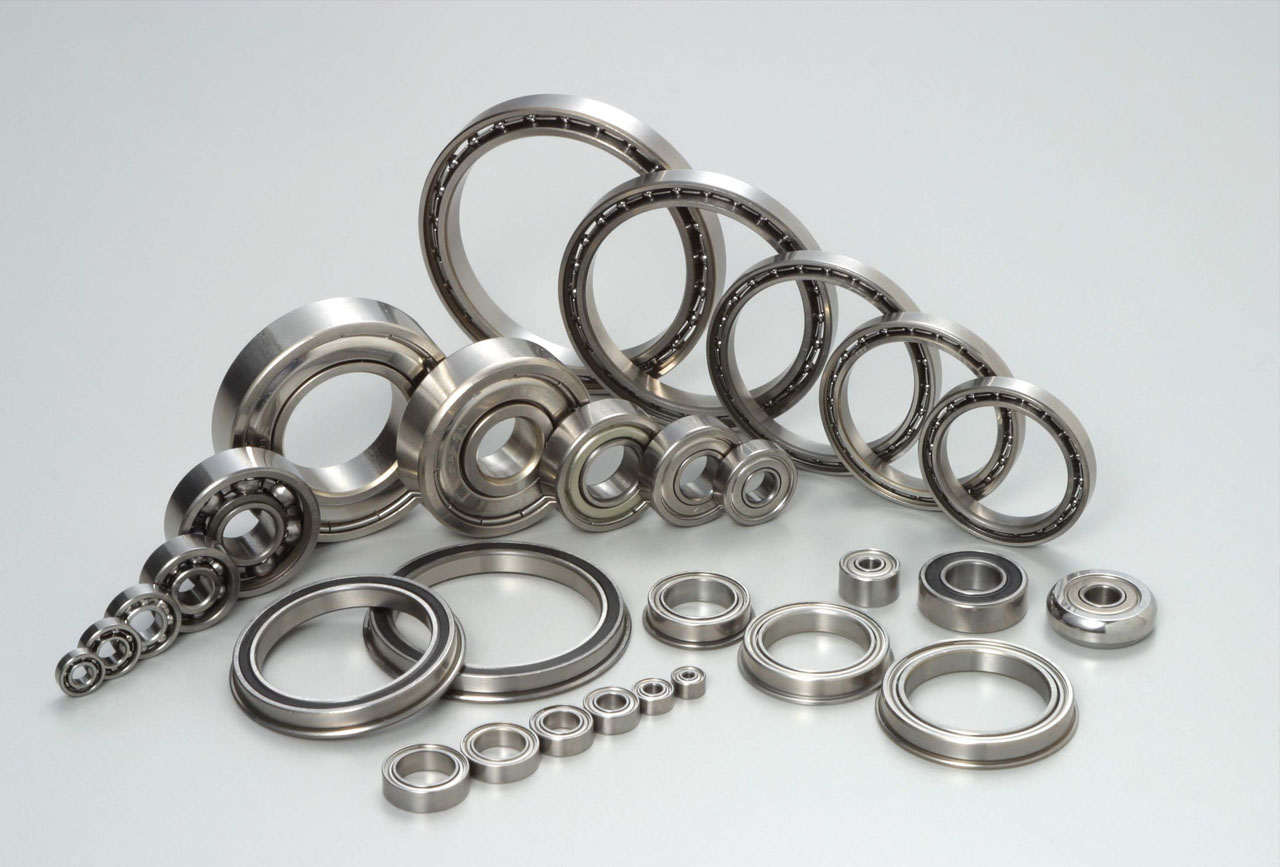
The Type-X 4-point contact thin section bearings are ideal for moment loading for moment loading and reversing axial loading....
The RA crossed roller bearing can efficiently bear radial, axial and moment loads through cylindrical rollers arranged orthogonally. Its compact structure and high - rigidity design make it particularly suitable for industrial equipment with strict r......
The YRT bearing adopts a design of double-row crossed rollers arranged orthogonally. Through the matching between the precisely ground raceways of the inner and outer rings and the rollers, it provides nanometer-level rotational accuracy. Its compact......
The double row slewing bearing can efficiently bear axial,radial and tilting moment loads through the unique arrangement of two rows of balls. Its robust structure and stable performance make it play a key role in many devices that require high load-......
Type-A thin-section angular contact ball bearings handle combined loads, fit high-precision, high-speed, small-space scenarios; thin bearing optimizes thrust support....
Type-C thin-section deep groove ball bearings are specifically designed for compact devices that require high radial load capacity. Their structure optimizes the contact mode between the rolling elements and the raceways, supporting moderate axial lo......
The RB crossed roller bearing adopts a split outer-ring and rotating inner-ring structure. Through the orthogonal layout of cylindrical rollers, it can efficiently bear radial, axial, and moment loads. Its high-rigidity structure and high load-bearin......
The RU crossed roller bearing adopts an integral design for both the inner and outer rings, with built-in lubrication holes and mounting holes. Through the orthogonal arrangement of cylindrical rollers, it can efficiently bear radial, axial and momen......
The SXU crossed roller bearing features an integral inner ring and split outer ring structure, achieving high rigidity support and compact installation through an orthogonal roller arrangement. Its ultra - thin cross - section design is suitable for ......
The CRBH cross roller bearings adopt an integral design for both the inner and outer rings. Through the orthogonal roller layout,they can efficiently bear multi-directional loads. Their ultra-thin cross-section (with a minimum cross-section height of......
The ZKLDF turntable bearing can efficiently bear radial, axial and overturning moments through double rows of orthogonally arranged cylindrical rollers. Its integrated structure design is especially suitable for CNC equipment that requires ultra high......
The RMWR series working roll bearing is engineered for highspeed rolling mills, offering exceptional precision, durability, and load capacity. Designed to withstand extreme rolling forces (≤6000 kN) and high rotational speeds (≤1500 rpm), it ensures ......
The RMTS series rolling mill thrust bearing is specifically designed to handle extreme axial loads (≤10,000 kN) in rolling mill applications. Engineered for high rigidity, precision alignment, and durability, these bearings ensure smooth operation in......
High-speed wire rod mill bearing employs carburized steel and precision grinding technology, ensuring stable performance under harsh conditions (impact loads, high temperature, dust). Key designs include multi-row symmetric rollers, anti-centrifugal ......
The RMSB rolling mill support bearing features a multi-row cylindrical roller design,specifically engineered for high radial loads (≤8000 kN) and shock loads in extreme steel mill conditions. Its optimized internal structure withstands high temperatu......
The NEWBEE bearing Series cross cylindrical roller slewing bearing is engineered to handle combined axial, radial, and overturning moment loads simultaneously. Its 1:1 cross-arranged rollers and compact structure ensure minimal weight while maintaini......
The Three Row Cylindrical Roller Slewing Bearing achieves independent bearing of axial,radial,and moment loads through the orthogonal arrangement of three rows of cylindrical rollers. Its high-strength structure and optimized load distribution design......
The four-point contact ball slewing bearing features a unique four-point contact design, where steel balls interact with arc-shaped raceways to handle axial, radial, and overturning moment loads simultaneously. Available in split or integral ring str......
Our precision-engineered cages are designed to maximize deep groove ball bearing performance through optimal ball spacing and guidance. These components prevent ball-to-ball contact, reduce friction, and enhance operational stability across speed ran......
Our engineered cages optimize cylindrical roller bearing performance through advanced roller control and load distribution. Designed for demanding industrial applications including machine tool spindles, wind turbines, and heavy equipment, these comp......
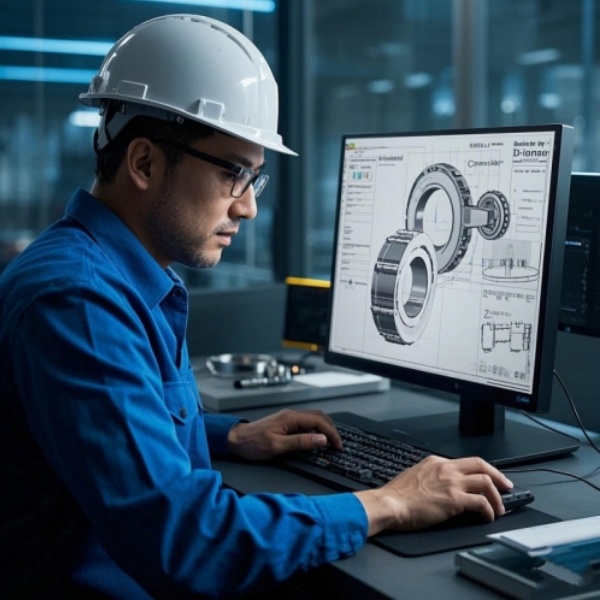
Our company has a professional design team composed of CAD senior engineers, SolidWorks senior engineers and others. According to customers' requirements, we can achieve seamless connection from 2D drawing to 3D model construction and virtual assembly of bearing products.
NEWBEE Transmission is a company with modern production workshops. Our company is equipped with professional production equipment such as CNC machining centers, grinding machines, milling machines, external diameter gear grinding machines, CNC drilling machines, quenching machines and dust-free assembly rooms, providing customers with one-stop precision bearing production solutions.
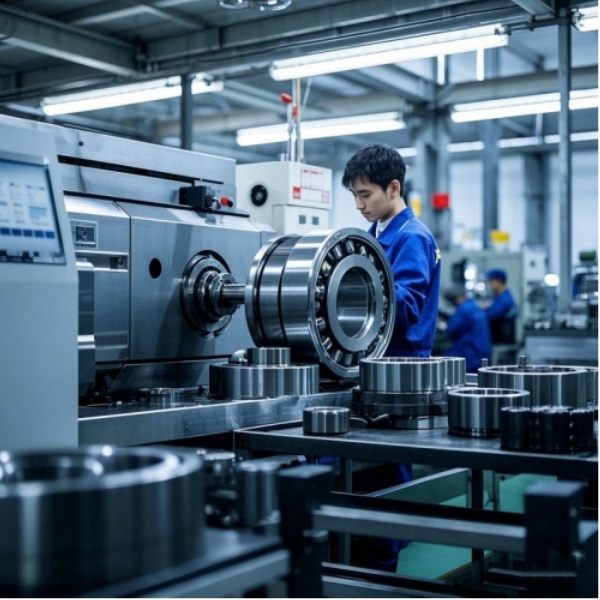
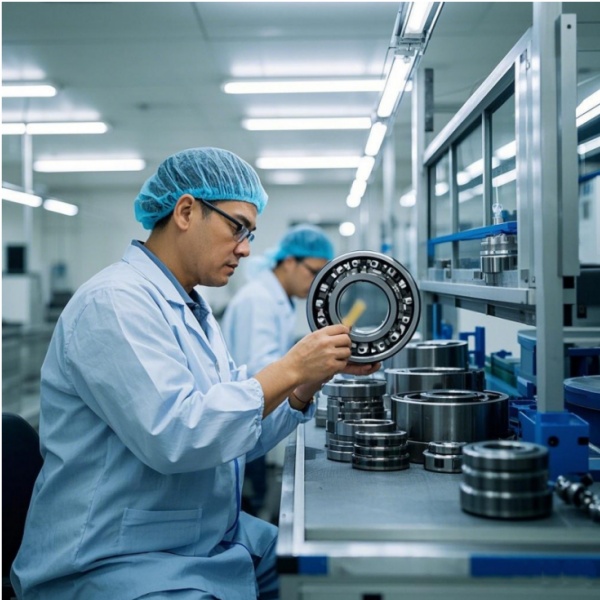
NEWBEE Transmission is a company equipped with a professional inspection system. Our company has professional equipment including roughness profilometers, contact angle measuring instruments, metallographic laboratories, friction torque measuring instruments, roundness measuring instruments. In addition, we have a quality inspection team composed of dozens of members who graduated from colleges and universities and possess professional skills.
Our factory boasts remarkable logistics capabilities. We've partnered with numerous reliable shipping firms for domestic and international deliveries. Our in - house team, well - versed in shipping procedures, ensures seamless operations. With advanced logistics software, we offer real - time order tracking. Plus, our large, well - laid - out warehouse boosts efficiency.
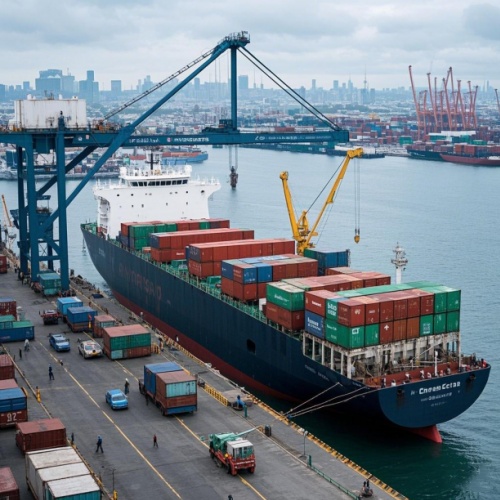
How to customize precision bearings?
1. Requirement Control: Based on your requirements for bearings, including key parameters such as load type, speed range, operating temperature and environment, accuracy class, lifespan requirements, and special needs,we will provide you with professional solutions.
2. Design and R&D: As a core link, we use CAD modeling tools to optimize the internal geometric structure, verify the design reliability through finite element analysis and material mechanics calculations,and select appropriate lubrication schemes to enhance the theoretical performance of the bearings.
3. Production and Manufacturing: According to your requirements for precision bearings, we select suitable materials and conduct appropriate heat treatment.Advanced technologies are applied during the processing to ensure high precision, and the assembly is carried out in a clean workshop to ensure product quality.
4. Quality Inspection: A variety of professional equipment and methods are used to comprehensively inspect the geometric accuracy, dynamic performance, and material quality to ensure that the products meet international standards or specific customer specifications.
5. Delivery Service: We provide high - quality packaging and transportation, offer installation and maintenance guidance, establish a quality traceability system, and conduct failure analysis in a timely manner. We ensure high - quality delivery to meet your performance requirements for high reliability, long lifespan, and extreme working conditions.

In industrial robotics, thin section bearings are crucial for joint parts, offering high precision and flexibility.Their compact design allows for reliable support in limited spaces, bearing radial an...
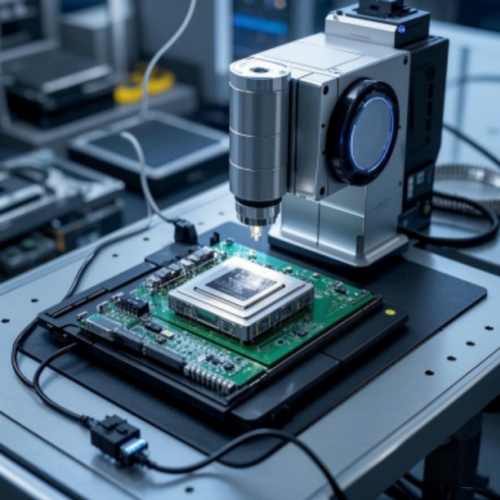
Thin-section bearings play a crucial role in the precision positioning of semiconductor manufacturing equipment, ensuring high-precision patterning. They enable high-speed and stable operation during ...

Cross Roller Bearing play a critical role in aircraft landing gear systems, handling high impact forces and ensuring smooth operation during landing, takeoff, and taxiing. In aircraft engines componen...

Wind Turbines: In large-scale wind power generating units, slewing bearings are used to support the nacelle and the impeller. They bear various loads under the action of strong winds. Their reliabilit...
What’s the precision bearings?
Precision bearings are a type of bearing with high-precision manufacturing and performance characteristics, playing a crucial role in various fields that require high-precision motion control and stable operation.
Features of the precision bearings
High Precision
Dimensional Accuracy:The manufacturing process of precision bearings strictly controls the dimensions of each component. The dimensional tolerances of the inner and outer rings, rolling elements, and cages are extremely small. For example, in some ultra-precision bearings, the dimensional error of the inner and outer ring diameters can be controlled within a few micrometers.
Runout Precision:They have extremely low runout, which means that during the rotation of the bearing, the radial and axial runout is minimal. This is crucial for applications that require high-precision rotation, such as in optical processing equipment, where the runout of the spindle bearing needs to be controlled within a very small range to ensure the accuracy of optical component processing.
Low Friction
Smooth Surface Finish: The raceway surfaces of precision bearings are polished to a high degree of smoothness. The low surface roughness reduces the frictional resistance between the rolling elements and the raceways. As a result, the bearing can operate with lower energy consumption and less heat generation.
Optimal Lubrication Design: They are often designed with optimized lubrication channels and grease filling methods. This ensures that the lubricant can be evenly distributed within the bearing, further reducing friction and wear.
High Rigidity
Strong Structural Design: Precision bearings usually have a more robust structural design. The thickness and material of the inner and outer rings are carefully selected and designed to improve the bearing's ability to resist deformation under load.
High Load-Carrying Capacity: They are capable of withstanding high radial and axial loads while maintaining their precision. For example, in heavy-duty machine tools, precision bearings need to support the large cutting forces and axial thrust generated during machining, ensuring the stability and accuracy of the machine tool's operation.
Good Stability
Resistance to Thermal Expansion: The materials used in precision bearings have low thermal expansion coefficients. This means that under different temperature conditions, the bearing's dimensions change very little, maintaining its original precision and stability.
Vibration and Noise Reduction: Precision bearings are designed to reduce vibration and noise. Their precise manufacturing and balanced structure minimize vibration during operation, resulting in quiet operation.
High-Speed Performance
Low Centrifugal Force: The rolling elements and cages of precision bearings are designed to have low centrifugal force at high speeds. This allows the bearing to maintain stable operation and reliable performance even at extremely high rotational speeds.
Good Heat Dissipation: They have good heat dissipation performance. At high speeds, the heat generated by the bearing can be quickly dissipated to prevent overheating, which could affect the bearing's performance and lifespan.
Types of the precision bearings
1. Ball Bearings
Deep Groove Ball Bearings:
The most common type, used for radial and axial loads.
Suitable for high-speed and low-noise applications.
Used in everything from electric motors to automotive components.
Angular Contact Ball Bearings:
Designed to handle both radial and axial loads.
Often used in high-speed applications (e.g., machine spindles, robotics).
The contact angle between the balls and the raceways allows for higher axial load handling.
Self-Aligning Ball Bearings:
Have two rows of balls and a common spherical raceway.
Automatically align in case of shaft misalignment, making them ideal for certain industrial applications.
Ceramic Ball Bearings:
Use ceramic balls (usually silicon nitride) to reduce friction and increase performance.
Offer better heat resistance and wear resistance compared to traditional steel bearings.
Often used in high-speed or high-precision applications like turbines and medical equipment.
2. Roller Bearings
Cylindrical Roller Bearings:
Use cylindrical rollers instead of balls, offering higher radial load capacity.
Good for high radial loads at moderate speeds.
Suitable for heavy-duty industrial machinery and automotive.
Tapered Roller Bearings:
Designed to handle both radial and axial loads.
The inner and outer raceways are tapered, which helps to distribute the load better.
Commonly used in wheel hubs, gearboxes, and truck axles.
Needle Roller Bearings:
A type of cylindrical roller bearing with small diameter rollers, allowing for a compact design.
Ideal for applications where space is limited but high load-bearing capacity is required.
Used in automotive, industrial, and aerospace applications.
Spherical Roller Bearings:
Have two rows of rollers and are designed to accommodate misalignment.
Ideal for heavy-duty applications where shaft deflections or misalignment occur.
Common in heavy machinery, mining, and wind turbines.
3. Thrust Bearings
Thrust Ball Bearings:
Specifically designed to handle axial loads.
Ideal for low to medium speed applications with axial loading requirements.
Common in gearboxes, automotive, and aerospace systems.
Tapered Thrust Bearings:
A combination of tapered roller bearings and thrust bearings, capable of handling both axial and radial loads.
Used in applications such as automotive transmissions, rotary tables, and conveyor systems.
Needle Thrust Bearings:
A variant of needle bearings designed to support axial loads.
Often used in high-precision applications like medical devices and instruments.
4. Magnetic Bearings
Active Magnetic Bearings (AMBs):
Use magnetic fields to levitate a rotating shaft, reducing friction.
Often used in high-speed applications such as turbines, flywheels, and pumps.
Passive Magnetic Bearings:
Use permanent magnets to provide a magnetic bearing force without requiring active control systems.
Often used in applications where precision control is not as critical.
5. Hybrid Bearings
Hybrid Ceramic Bearings:
Incorporate ceramic balls with steel races to combine the benefits of both materials.
Offers reduced friction, heat resistance, and longer life compared to full steel bearings.
Commonly used in high-speed and high-precision environments.
6. Thin-Section Bearings
Thin-Section Ball Bearings:
Feature a thin outer ring and reduced bearing cross-section.
Provide a compact design with high precision.
Often used in aerospace, robotics, and machine tools.
7. Custom Bearings
Custom Precision Bearings:
Designed to meet very specific application requirements in terms of size, load capacity, and material.
Used in specialized industrial applications, medical devices, or in scientific instruments.
Summary Table of Bearing Types
Bearing Type | Features | Common Uses |
Deep Groove Ball Bearings | Radial and axial load support, quiet, high-speed capability | Motors, pumps, automotive |
Angular Contact Ball Bearings | Radial + axial load, high-speed and high-precision | Spindles, robotics, machine tools |
Cylindrical Roller Bearings | Higher radial load capacity, moderate speed | Heavy machinery, automotive |
Tapered Roller Bearings | Radial and axial load handling, high radial load capacity | Gearboxes, automotive, wheel hubs |
Needle Roller Bearings | Compact, high load capacity, space-efficient | Automotive, aerospace, industrial |
Spherical Roller Bearings | Handle misalignment, heavy-duty, large load capacity | Mining, heavy machinery, turbines |
Thrust Ball Bearings | Axial load handling, simple design | Gearboxes, automotive, machinery |
Magnetic Bearings | Zero friction, high-speed, magnetic levitation | High-speed turbines, flywheels |
Hybrid Bearings | Ceramic balls with steel races, reduced friction and wear | High-speed, high-precision systems |
Thin-Section Bearings | Lightweight, space-saving, high precision | Aerospace, medical equipment |
How to select the precision bearings?
1. Identify the Type of Load
Radial Loads: If the bearing will primarily support forces perpendicular to the shaft, such as in motors or conveyors, you may need radial ball bearings (e.g., deep groove ball bearings).
Axial Loads: If the bearing is subjected to forces along the shaft, consider thrust bearings (e.g., thrust ball bearings or tapered roller bearings).
Combined Loads: If the bearing needs to handle both radial and axial loads, angular contact ball bearings or tapered roller bearings are good options.
2. Consider the Operating Speed
High-Speed Applications: Choose bearings designed for low friction and minimal heat generation, such as ceramic ball bearings or hybrid bearings (ceramic balls with steel races).
Moderate to Low-Speed Applications: Regular steel ball bearings or cylindrical roller bearings may suffice.
High-Speed Precision: For maximum performance at very high speeds, consider angular contact ball bearings, which offer excellent precision.
3. Determine the Load Capacity
Radial Load Capacity: Ensure the bearing type can handle the expected radial load. Cylindrical roller bearings offer higher radial load capacity than ball bearings.
Axial Load Capacity: If the application involves significant axial loads, go for tapered roller bearings or angular contact ball bearings, which are designed for handling both radial and axial loads.
4. Precision Level (Tolerance)
Tolerance Grade: Choose a bearing with the correct precision grade (e.g., P0, 6, 5, 4, or 2) based on your application's accuracy requirements.
P0: Standard tolerance for general industrial applications.
P6/5: Suitable for moderate precision, widely used in machinery and automotive.
P4/2: Used in high-precision applications like aerospace, robotics, and high-speed machinery.
Higher ISO grades or P4/P2 tolerance levels also indicate higher precision, which is necessary for applications where minimal runout or vibration is critical.
5. Consider Environmental Conditions
Temperature: Bearings designed for high or low temperatures (such as ceramic bearings) are important in environments with temperature extremes.
Corrosion Resistance: If the bearing is exposed to moisture, chemicals, or corrosive environments, choose bearings made from stainless steel, or use sealed or shielded bearings for added protection.
Cleanliness: In clean room applications (like in the semiconductor or medical industry), cleanroom-grade bearings with low contamination and smooth surfaces are essential.
6. Bearing Size and Space Constraints
Space Restrictions: For applications with limited space, you may need thin-section bearings or needle roller bearings.
Load Requirements: Ensure the bearing size matches the expected load and torque. Larger bearings often carry more load but may not fit into smaller spaces.
7. Bearing Material
Steel Bearings: Most common, offering good strength, toughness, and resistance to wear. However, they may be prone to corrosion.
Stainless Steel Bearings: Ideal for harsh environments (moisture, chemicals), though they may have slightly lower strength than carbon steel.
Ceramic Bearings: Offer low friction, high wear resistance, and can withstand higher temperatures. They are often used in high-speed and high-precision applications.
Hybrid Bearings: Combination of ceramic balls and steel races provide lower friction, heat resistance, and longer life.
8. Lubrication Requirements
Greased Bearings: Common in general industrial applications, providing long-lasting lubrication but requiring maintenance.
Oiled Bearings: Suitable for high-speed applications, offering lower friction but may need more frequent lubrication.
Sealed Bearings: Pre-lubricated and sealed to prevent contaminants from entering the bearing, reducing maintenance needs.
Shielded Bearings: Similar to sealed bearings but with less protection against contamination.
9. Vibration and Noise Considerations
Low Noise Requirements: In high-precision machinery or applications like medical equipment or robotics, noise and vibration can affect performance. Choose bearings with minimal runout, such as angular contact ball bearings or ceramic bearings, which reduce vibrations.
Minimized Runout: Bearings with tighter tolerances will help minimize vibrations and ensure smooth operation.
10. Cost vs. Performance
Precision bearings can vary significantly in cost based on the materials, tolerances, and design. Choose the best bearing that meets your requirements while balancing performance and cost.
Consider the total cost of ownership, which includes maintenance and potential replacement costs. For high-precision applications, investing in higher-quality bearings may result in fewer failures and less downtime.
Summary of Key Selection Criteria
Factor | Considerations |
Load Type | Radial, axial, or combined loads |
Operating Speed | High-speed: low friction, hybrid or ceramic bearings |
Load Capacity | Radial and axial load capacities |
Precision | Tolerance grades (P0,6,5,4,2) or ISO/P4/P2 |
Environmental Conditions | Temperature, humidity, corrosive environments |
Bearing Size | Compact, thin-section, or large bearings |
Material | Steel, stainless steel, ceramic, hybrid |
Lubrication | Greased, oiled, sealed, or shielded |
Vibration/Noise | Low vibration, high precision, low runout |
Cost | Performance vs. total cost of ownership |
Step-by-Step Selection Process
1.Define application requirements (load type, speed, precision, environment).
2.Choose bearing type (ball, roller, thrust, or hybrid).
3.Determine the required load capacity (radial, axial, or combined).
4.Select precision grade (P0,6,5, ISO, or P4/P2).
5.Choose appropriate materials (steel, ceramic, hybrid, stainless).
6.Consider lubrication needs (sealed, greased, or oiled).
7.Review environmental factors (temperature, contaminants, moisture).
8.Check bearing size and space constraints.
By carefully considering these factors, you can select the ideal precision bearing for your specific application.
If you’d like further guidance or have a particular application in mind, feel free to share details!
Price of the precision bearings
For specific price details, you can communicate with our staff.
Supplier of the precision bearings
NEWBEE Transmission is a precision bearing company boasting over ten years of rich experience. We have professional and modern production workshops, dust - free assembly workshops as well as testing equipment. Our team is composed of senior engineers, senior technicians, professional inspectors and quality assurance staff, enabling us to offer customers professional precision bearing solutions.
NewBee Machinery provides high quality shaft, bearing, gears, CNC machines and other customized mining machinery.
NewBee Machinery has 20 years’ experience in customize machinery parts.
Professional and effective research and design team
We have advanced large CNC centner and processing equipment.
NewBee Machinery provides cost effective products for global customers.
If you are looking for customized machinery parts, precision bearings or CNC Machinery, feel free to contact us and our team will reply within 48 hours.